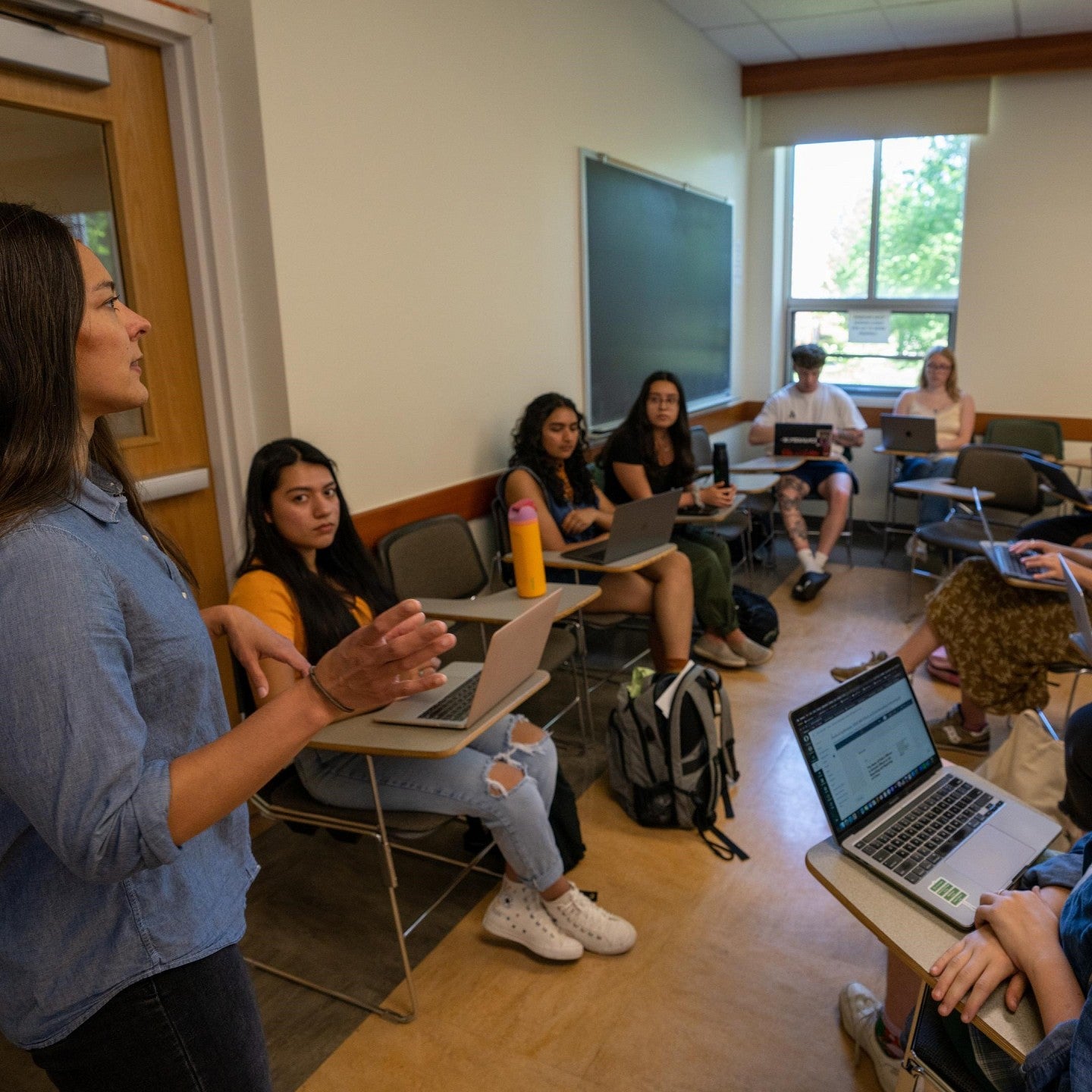
Teaching in Turbulent Contexts
Resource Guide
Teaching occurs in and is impacted by contexts beyond the course itself. Our shared global context includes impacts of climate change, economic insecurity, and armed conflict. Political polarization in the US is near record highs. The most recent FBI hate crimes statistics are second only to reports the year prior. While we share numerous contexts that inspire positivity and excitement, we know many students are also negatively--and personally--impacted by issues like these.
We cannot magically shift contexts that may prompt fear, stress, or loss, but we can use some basic teaching practices that support student learning and act as positive anchors in turbulent times.
This page identifies six principles that feel particularly relevant for teaching right now, practices that correspond to each, and additional resources to support your teaching.

Principles for Teaching in Turbulent Contexts
Examples of Teaching Principles in Practice
Principle 1: Foster class community early.
- Know and use student names (and encourage students to use one another’s). Read strategies for learning names on the Introduction to Inclusive Teaching page.
- Let students know you believe all can succeed and have contributions others will benefit from (and provide low-stakes opportunities for them to contribute).
- Put students in small groups that they return to with some consistency, both for small group active learning, and for occasional check-ins and brief “getting to know you” questions at the beginning of the term.
Principle 2: Set norms for discussion and dialogue early.
- Draft discussion agreements (also called referred to as “class compacts” or “discussion guidelines”) with your class, and use them consistently. Collectively agreeing about how you’ll engage with each other provides transparent guidance, accountability, and creates a container for conversations that may feel difficult. Read a brief description of how to set up group agreements on Berkley’s Creating Community Agreements page, and examples of agreements on the Sheridan Teaching and Learning Center’s Sample Guidelines.
- Prompt metacognitive moments around discussions, as you would with other activities. Before discussions, prompt a recall of the discussion goals and any agreements; afterwards, prompt reflection on whether and how they and the class met those goals and agreements and anything they want to change next time. Read more about supporting discussions on our Designing Discussions page.
Principle 3: Assume that students hold a wide range of identities, experiences, and histories.
Assume that students hold a wide range of identities, experiences, and histories that may not match our own and that may not be apparent to us. Some students may be experiencing active risk, personal loss, or fear and anxiety around a given conflict. Others may experience excitement, hope, or relief around aspects of that same conflict.
- Consider the beliefs you have around who our students are and how their experiences do or don’t align with your own. Reflective questions like those in the Introduction to Inclusive Teaching page can be useful for some of us.
- Reconsider sharing your personal analysis of a conflict that is unrelated to your course, particularly when the inference is that other perspectives are invalid.
Principle 4: Teach and invite complexity.
Part of how we build knowledge and understanding of complex topics is through exploring multiple perspectives, frames, or positions on that topic. Valuing and prioritizing multiple perspectives" does not need to mean presenting different "sides."But offering multiple perspectives or frames can demonstrate the value of discourse within our disciplines and underscore the necessary partiality of any one perspective.
- Include multiple perspectives in course materials and activities, even if you are committed to a particular perspective yourself.
- Offer perspectives that don’t flatten a particular identity or history or present them as two-sides of a binary.
- Highlight the value of holding multiple perspectives in your discipline. When has the intersection of perspectives and contexts been key to knowledge or action you or your students value?
Principle 5: Acknowledge that a conflict may be impacting students and express care.
Ignoring what is happening can add to the pain of members of our community who are most impacted. An acknowledgement might simply mean saying that you know the event may be impacting students in different ways, and you hope any who need it reach out for support.
- In addition to expressing care and awareness that students may be impacted, be clear with yourself and with students about what happens after you are done talking. For example, an instructor might tell students that you know X is occurring, that students are likely impacted by it in different ways, and that while the class will continue with its regular focus, they hope students will reach out if they need support.
- Find additional guidance and language for navigating current traumatic events in class on our Trauma Informed Pedagogy page.
Principle 6: If you decide to directly engage with a conflict or charged context in class, clearly articulate the purpose.
- Make the “why” clear. Link activities or discussions directly to class objectives. Specifying the “why” can help provide scope and decrease overwhelm.
- Share discussion questions or information about the activity before the class (if the class is synchronous) to give students time to process.
- Provide more than one way to participate (small group discussion, questions or comments submitted before or during class, a post-class reflection) to increase students’ ability to engage on a personally or culturally difficult topic. If doing small group discussions, ensure that group discussions have been consistently used, that the class has discussion norms, and that the prompt for discussion is clear.
- In line with the considerations above, strive for self-awareness of both the richness and limitations of one’s knowledge and experience, and commit to multiple perspectives.
